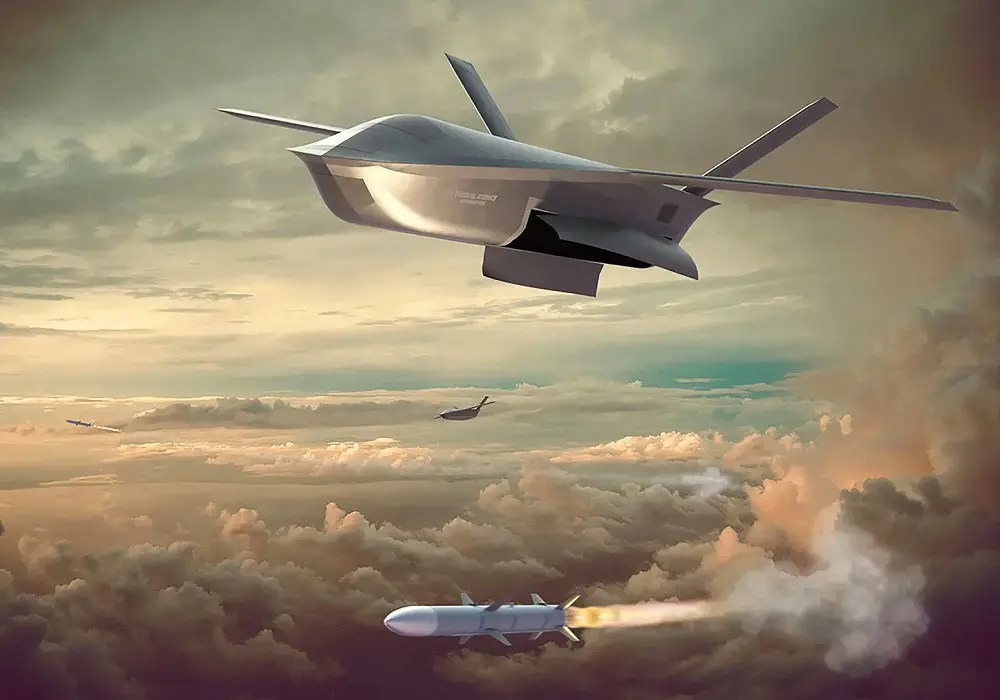General Atomics Awarded DARPA’s LongShot Air-to-Air Combat Drone Tender
General Atomics has secured the coveted contract for the LongShot program, a project by the U.S. Defense Advanced Research Projects Agency (DARPA) aimed at developing air-launchable uncrewed aircraft equipped with air-to-air missile capabilities. This cutting-edge initiative promises to usher in a new era of aerial combat capabilities, offering fighter and bomber aircraft enhanced flexibility to engage threats at extended ranges. General Atomics Aeronautical Systems, Inc. (GA-ASI) is poised to commence flight testing of this remarkable drone later this year. The LongShot program, initiated in 2021, originally awarded contracts to General Atomics, Lockheed Martin, and Northrop Grumman. However, the latest announcement confirms General Atomics as the sole awardee for the next phase, reflecting their commitment to pushing the boundaries of aerial warfare technology.
A glimpse into the future of LongShot reveals an aircraft design that has evolved significantly over the past two years. The newly unveiled concept art showcases an elongated fuselage, small canards at the front, reverse-swept main wings towards the rear, and an inverted V-shaped twin-tail configuration. Notably, the main wings are designed to deploy after launch, and the drone features a streamlined tail-like extension behind a top-mounted dorsal engine air intake and a distinctive chined nose. Comparing this design with the 2021 rendering, it is evident that General Atomics has made substantial improvements. The current concept envisions the drone launching an AIM-120 Advanced Medium Range Air-to-Air Missile (AMRAAM), although the specifics of whether the missiles will be carried externally or in an internal bay remain to be clarified.

DARPA’s LongShot air-launchable uncrewed aircraft equipped with air-to-air missile capabilities. (Photo by General Atomics)
The compatibility of LongShot with F-15 variants, including the new F-15EXs, offers an intriguing prospect. In 2020, photographs surfaced of an Air National Guard F-15C Eagle carrying a modified Kratos UTAP-22 loyal wingman-type drone under its wing, underscoring the potential for collaborative operations. While detailed information about the LongShot drone’s design and DARPA’s plans are still emerging, the program’s funding is set to increase to just over $44 million in Fiscal Year 2024. DARPA’s objectives for the coming year include fabricating flight test vehicles, integrating them onto host aircraft, conducting captive carry tests, and initiating a series of flight demonstrations to validate missile separation from the host flight test vehicle.
DARPA’s LongShot program has the potential to transition into the U.S. Air Force and/or Navy upon successful completion. For the Air Force, LongShot aligns with the Collaborative Combat Aircraft (CCA) initiative, which seeks to develop autonomous drones that work closely with crewed combat jets. This integration is part of the broader Next Generation Air Dominance (NGAD) effort, symbolizing the adaptability and interconnectedness of cutting-edge military technologies. General Atomics’ involvement in other programs, such as the Off-Board Sensing Station (OBSS) and its highly modular drone design called Gambit, underscores the company’s commitment to advancing drone technology and reinforcing its position as a key player in shaping the future of air combat. General Atomics’ selection as the primary contractor for the LongShot program represents a significant leap forward in the evolution of air-to-air combat capabilities. It has the potential to redefine the way we engage aerial threats, ensuring that the United States maintains its edge in modern warfare.

